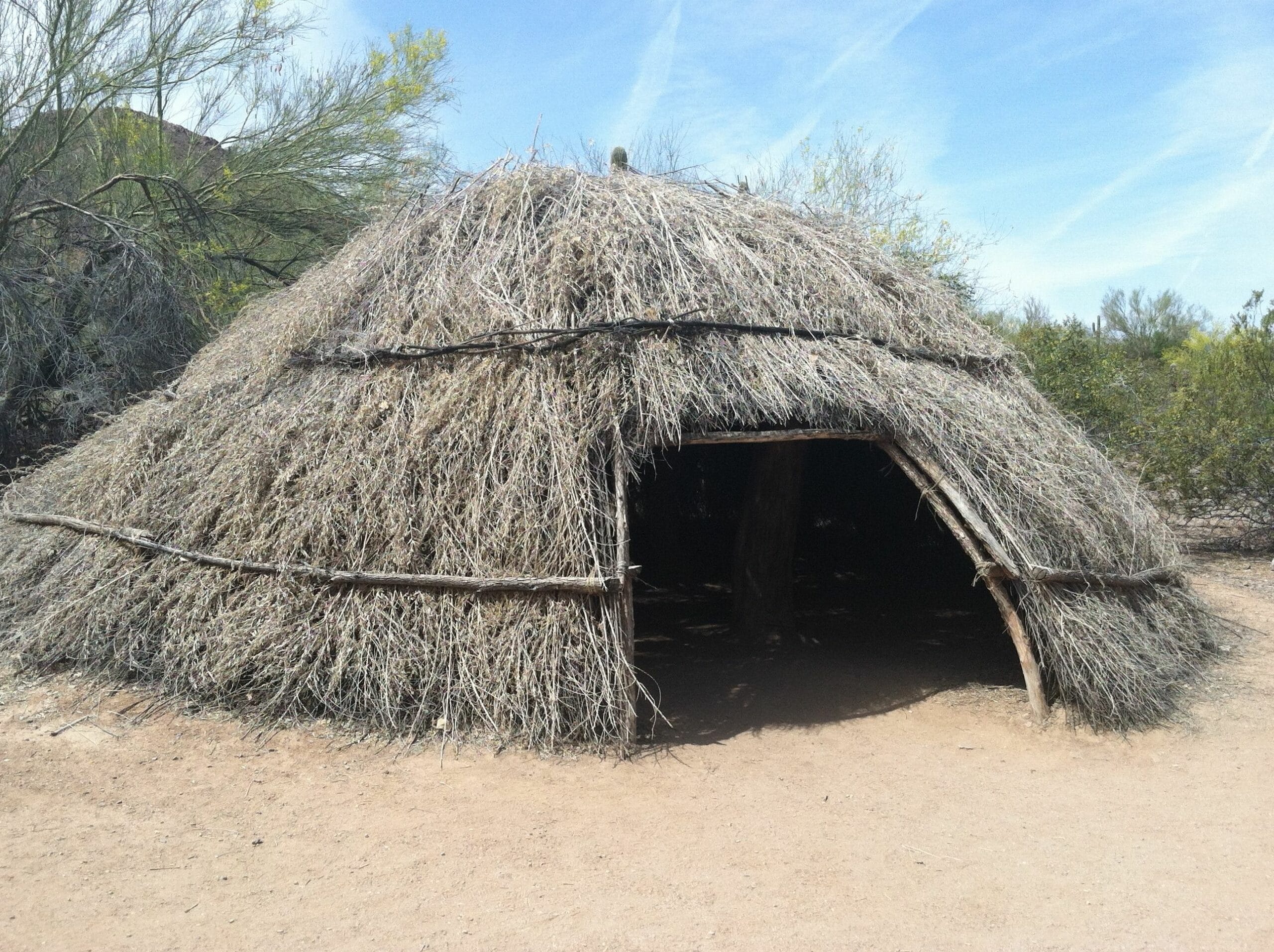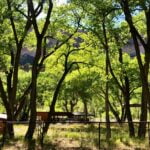Let’s explore the fascinating world of Native American architecture by comparing two unique dwellings: wickiups and wigwams. Discover what makes these structures special, from their construction and shapes to their cultural significance.
Wickiups: The Adaptable Dwellings
While tipis often steal the spotlight, wickiups represent a different facet of Native American ingenuity. These dome-shaped homes, predominantly found in the western and southwestern United States, showcase a remarkable ability to adapt to diverse environments.
Building with Nature’s Bounty
Imagine gathering flexible branches like willow, cottonwood saplings, or juniper poles. These pliable materials are carefully bent and woven together, forming the sturdy, dome-like framework of a wickiup.
The roof, a testament to resourcefulness, is then layered with bark, grasses, reeds, or even animal hides, creating a weather-resistant shelter that blends seamlessly with the natural surroundings.
More Than Just Shelter
Wickiups were more than just houses; they were community hubs where families gathered, stories were shared, and traditions thrived. The act of building a wickiup was a spiritual experience, connecting tribes to the earth and honoring ancestral wisdom.
Wickiups Today: A Legacy Lives On
Even today, wickiups remain a vital part of Native American culture. Many tribes still build them for ceremonies and to keep their heritage alive. Their simple, sustainable design also inspires modern eco-friendly builders and continues to capture the imaginations of hikers and campers seeking shelter inspired by nature.
Wickiup vs. Wigwam: Spotting the Difference
While both are traditional Native American dwellings, there are key distinctions:
| Feature | Wickiup | Wigwam |
|---|---|---|
| Shape | Dome-shaped | Usually cone-shaped |
| Size | Smaller (15-20 feet across) | Larger (20-30 feet across) |
| Location | Western & Southwestern US | Northeastern US |
| Building Material | Flexible branches, natural | Poles, bark, mats |
| Vibe | Relaxed, adaptable | More structured |
Delving Deeper: Understanding Wickiups
Wickiups, far from being simple shelters, offer a glimpse into the ingenuity and harmony with nature that defined many Native American tribes.
These dwellings, found across North America, varied significantly in their construction and purpose. Some were temporary, ideal for nomadic tribes, while others reflected a more permanent connection to a specific region.
The materials used in wickiup construction were as diverse as the tribes themselves. Wood, bark, grasses—if nature provided it, it was likely incorporated. Flexible branches were masterfully woven into a sturdy dome-shaped frame, then layered with bark, grasses, or reeds to keep out the elements.
Often facing east to welcome the sun, these structures featured a central fire pit that provided warmth, light, and a place to cook. Smoke gracefully spiraled upwards, escaping through an opening at the top or a cleverly designed smoke flap.
The circular shape of many wickiups likely held deep cultural significance, symbolizing the interconnectedness of life and the strength of the community within.
Wickiup vs. Tipi: Distinctive Silhouettes
Imagine strolling through different Native American communities—the distinct profiles of wickiups and tipis would immediately capture your attention.
Picture a wickiup like a cozy dome nestled into the landscape. These smaller dwellings, often around 15-20 feet across, housed smaller families or individuals. They were built with a framework of branches, much like an upside-down basket, then covered with readily available natural materials like bark, grasses, or even animal hides, allowing them to blend seamlessly with their surroundings.
Tipis, on the other hand, stand tall and proud, their conical shapes instantly recognizable. Imagine sturdy wooden poles reaching for the sky, their tips converging to form that iconic point. Large animal hides, carefully draped and tied over this framework, created spacious dwellings that could accommodate entire families. Some tipis reached an impressive 30 feet in diameter, serving as more permanent homes for larger groups.
While both wickiups and tipis provided essential shelter, their differences in size, shape, and materials reflect the diverse needs, traditions, and environments of the tribes who built them.
How Do You Pronounce “Wickiup” in English?
Mastering the correct pronunciation of “wickiup” ensures respectful and accurate discussions about Native American culture.
The proper pronunciation is ˈwɪk.i.ʌp, with the emphasis on the first syllable: WICK-ee-up.
To get it right, think of words like “kick-up” or “pick-up,” where the stress naturally falls on the first syllable. Similarly, “wickiup” follows the same pattern.
The word itself is thought to originate from the Algonquian word “wikiyap,” meaning “dwelling” or “house.” This etymology highlights the word’s deep roots in Native American history.
Remember, while wickiups served as homes for many tribes, it’s essential to avoid using the term as a catch-all for all Native American dwellings. Other unique structures, like teepees, hogans, and longhouses, represent the architectural diversity of different indigenous cultures.
Wickiup Wisdom: Key Points to Remember
- Definition: Wickiups are dome-shaped Native American dwellings found primarily in the western and southwestern United States.
- Construction: They are built using flexible branches woven together and covered with natural materials such as bark, grass, or hides.
- Distinctive Features:
- Smaller than wigwams, typically 15-20 feet across.
- Feature relaxed and adaptable designs that utilize readily available materials.
- Significance:
- Provided shelter, served as community centers, and held spiritual significance.
- Continue to be used today in ceremonies and by hikers/campers.
- Their sustainable design principles inspire eco-friendly building practices.
- Comparison to Wigwams:
- Wickiup: Dome-shaped, smaller, constructed with flexible materials.
- Wigwam: Cone-shaped, larger, built with poles and mats.
By understanding the unique characteristics of wickiups, we gain a deeper appreciation for the ingenuity, adaptability, and profound connection to nature that characterize many Native American cultures.
- Discover Long Black Pepper: Flavor & Health Benefits - April 25, 2025
- Shocking Twists: The Grownup Review: Unreliable Narration - April 25, 2025
- A Quiet Place Book vs Movie: A Deep Dive - April 25, 2025
















